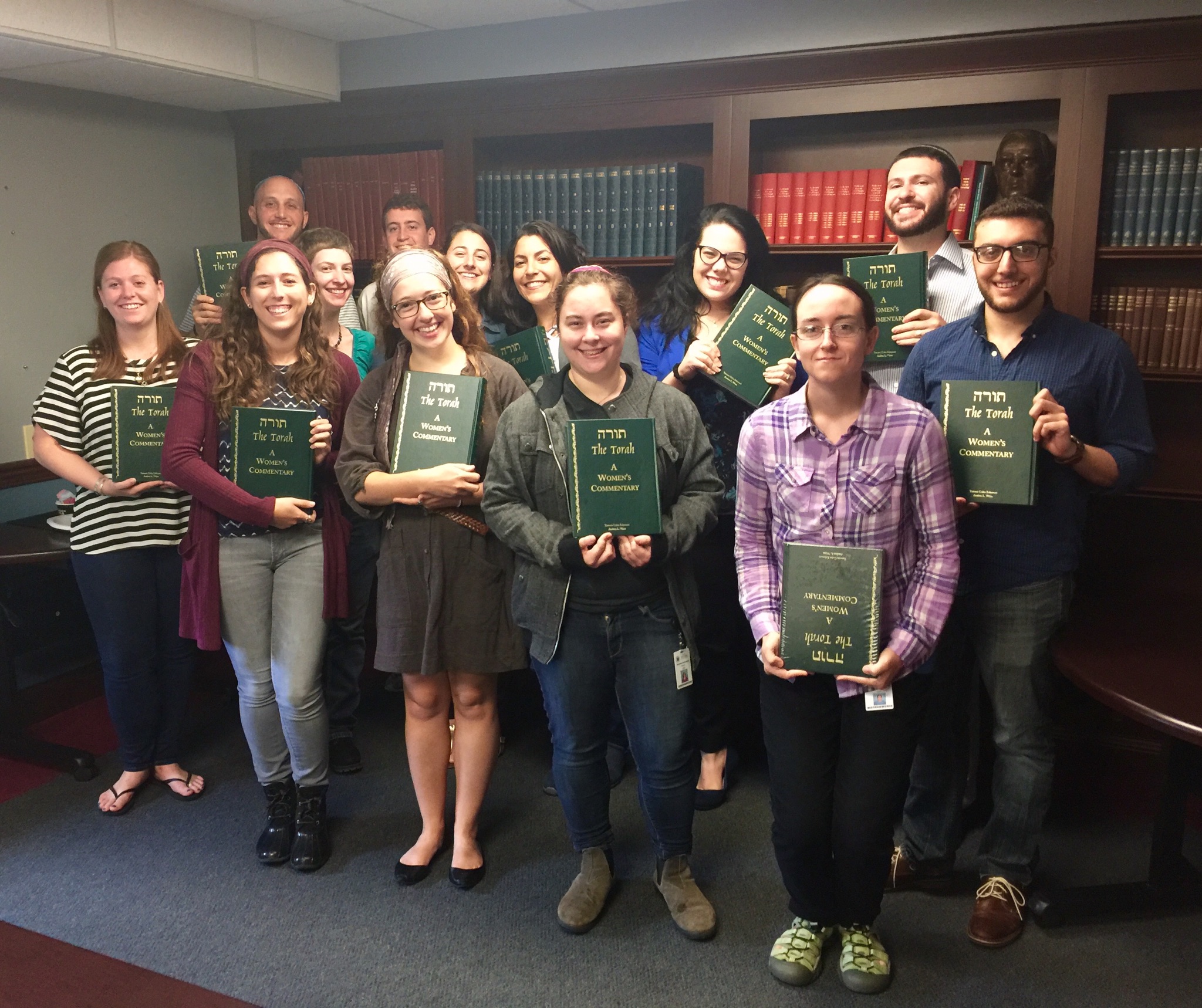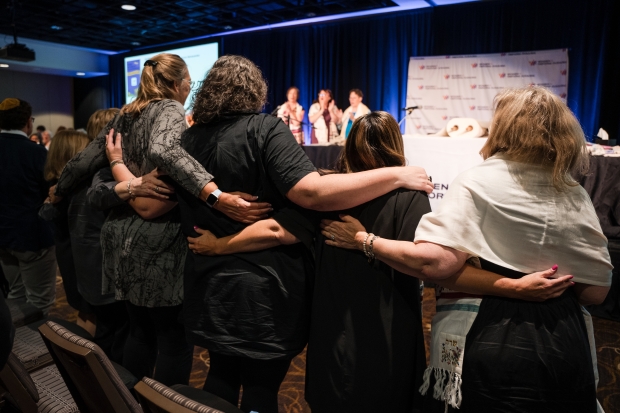
WRJ commissioned the work of the world's leading Jewish female Bible scholars, rabbis, cantors, theologians, historians, philosophers, sociologists, poets, and archaeologists, whose collective efforts resulted in the first comprehensive commentary on the Five Books of Moses to be authored only by women. The Torah: A Women’s Commentary was published in 2007 and included individual Torah portions as well as the Hebrew and English translations, giving dimension to the women's voices in our tradition.
In December 2024, the commentary was made publicly accessible as part of a partnership with Sefaria.
"For generations, the task of interpreting the texts of Torah has been almost exclusively the province of men. In our generation, this has changed and the voices of women and their understandings of the Torah have enriched our people. This Commentary will be a valuable addition to every synagogue, Torah study group, and Jewish home."
—Rabbi David Ellenson, z'l, Past President, Hebrew Union College - Jewish Institute of Religion (HUC-JIR)
Under editor Dr. Tamara Cohn Eskenazi's skillful leadership, this commentary provides insight and inspiration for all who study Torah: men and women, Jew and non-Jew. As Dr. Eskenazi has eloquently stated, “We want to bring the women of the Torah from the shadow into the limelight, from their silences into speech, from the margins to which they have often been relegated to the center of the page - for their sake, for our sake, and for our children's sake.”
The Creative Commons Attribution-NonCommercial 4.0 International Public License has been applied to the introductions, commentary and essays on Torah portions, and commentary on verses in The Torah: A Women's Commentary.
Each Torah portion in The Torah: A Women’s Commentary features:
- A central commentary was written by a biblical scholar.
- A second, shorter commentary from another biblical scholar that complements, supplements, or challenges the primary interpretation.
- A compendium of post-biblical interpretations highlighting issues related to women.
- A contemporary commentary reflecting social, philosophical, and theological concerns that link the Torah portion to current issues.
- Creative responses in the form of poems, prose, or modern midrash.
Free study guides for each parashah can be found in the sidebar.
The Torah: A Women's Commentary History
The idea of a women’s commentary was brought up at the 1993 WRJ Assembly when Cantor Sarah Sager urged WRJ members to “imagine women feeling permitted, for the first time, feeling able, feeling legitimate in their study of Torah.” Sager continued with a challenge to WRJ: “If we are really serious about women’s spirituality, about reclaiming our history and our voices, about liberating the concepts of God and community, of integrating the Torah of our tradition into the Torah of our lives, then there is something very concrete that we can do. We can commission the creation of the first feminist commentary to the Torah.”
During a 1995 conference between WRJ, noted rabbis, and biblical scholars, the Commentary began to be fleshed out. That year, a pilot volume entitled Beginning the Journey Toward a Women’s Commentary on Torah, edited by Rabbi Emily Feigenson, debuted. It offered commentaries on three parashiyot for sisterhoods and Torah study groups to try out.
By 2001, HUC-JIR Professor of Bible Dr. Eskenazi had signed on as editor of The Torah: A Women’s Commentary. Rabbi Andrea L. Weiss, Ph.D. joined as associate editor to complete the team. At the 2001 Assembly, a commentary on Parashat Pinchas was presented. By November 2005, Rabbi Hara Person at URJ Press had signed on as managing editor, and Barbara Koppel had agreed to be the project manager. The vision for the Commentary was complete: multiple looks at each parashah written by women plus poetry reflecting the parashah.
URJ Press suggested a name change from the working title “WRJ Women’s Commentary on the Torah” to The Torah: A Women’s Commentary, to be a companion publication to The Torah: A Modern Commentary by Rabbi W. Gunther Plaut.
The fundraising efforts for The Torah: A Women’s Commentary began with a $500,000 gift from Joanne B. Fried. WRJ leaders traveled coast to coast to meet with individual donors, to discuss donations at WRJ District meetings, and to build excitement about the upcoming publication, eventually raising in excess of $1.5-million to entirely fund the publication. In 2006, 15,000 people participated in Torah study using Parashat Chayei Sarah from the upcoming Commentary in a taste of what was to come.
The Torah: A Women’s Commentary was introduced in grand style with a party at the December 2007 WRJ Assembly and URJ Biennial in San Diego. In 2008, it won the National Jewish Book Council Everett Family Foundation’s Jewish Book of the Year Award. It was presented to President Barack Obama at the 2011 WRJ Assembly. Multiple printings have been needed to meet demands, and study guides for every parashah written.
WRJ leaders have referred to The Torah: A Women’s Commentary as one of WRJ’s crowning achievements. “There is no doubt in my mind that when the history of WRJ is written, that will be the stellar project,” said WRJ Past President Connie Kreshtool.
Said WRJ Past Executive Director Shelley Lindauer in 2009, “If the primary goals of first-wave feminism ... were equal access, enfranchisement, and property ownership, in this realm of Torah study, The Torah: A Women’s Commentary marks the accomplishment of these goals. It is clear, at this point, that Jewish women now own Torah.”
With your support, WRJ strengthens the voices of women worldwide and empowers them to create caring communities, nurture congregations, cultivate personal and spiritual growth, and advocate for and promote progressive Jewish values. Consider making a donation today!

